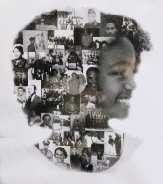February 29, 2024
As February comes to a close we hope you have enjoyed this special feature for Black History Month.
For more stories and information on Black History visit
As Black History Month 2024 and BlackPast.org’s 17th-anniversary celebration continues, we at BP are thrilled to announce the launch of our latest feature, the new Civil Rights Movement Timeline. Explore pivotal moments of the Black Freedom Struggle from 1905 to 1975 and uncover the stories and milestones that shaped the movement. See our new timeline here: https://www.blackpast.org/civil-rights-movement-timeline/
February 28, 2024
April 11, 1881 - Spelman College is four-year liberal arts women's college located in Atlanta, Georgia was founded as The Atlanta Baptist Female Seminary in the basement of Friendship Baptist Church in by two teachers from the Oread Institute of Worcester, Massachusetts:
1. Harriet E. Giles
2. Sophia B. Packard
Giles and Packard had met while Giles was a student, and Packard the preceptress, of the New Salem Academy in New Salem, Massachusetts, and fostered a lifelong friendship there. The two of them traveled to Atlanta specifically to foundation a school for black freedwomen.
They found support from Frank Quarles, the pastor of Friendship Baptist Church. Giles and Packard began the school with 11 Black American women and $100 given to them by the First Baptist Church in Medford, Massachusetts.
Furthermore, they was promised of further support from the Women's American Baptist Home Missionary Society (WABHMS), a group with which they were both affiliated in Boston.
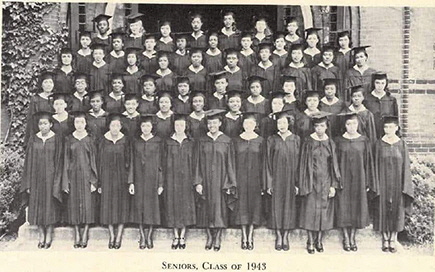
Although their first students were mostly illiterate, they envisioned their school to be a liberal arts institution - the first circular of the college stated that they planned to offer "algebra, physiology, essays, Latin, rhetoric, geometry, political economy, mental philosophy (psychology), chemistry, botany, Constitution of the United States, astronomy, zoology, geology, moral philosophy, and evidences of Christianity".
Spelman is the alma mater of thousands of notable Americans including the CEO of Sam's Club and former Executive Vice President of Walmart Rosalind Brewer, Pulitzer Prize winner Alice Walker, former Dean of Harvard College Evelynn M. Hammonds, activist and Children's Defense Fund founder Marian Wright Edelman, musician, activist & historian Bernice Johnson Reagon, writer Pearl Cleage, TV personality Rolanda Watts, Opera star Mattiwilda Dobbs, actors LaTanya Richardson, Adrienne-Joi Johnson, Keshia Knight Pulliam and many other luminaries in the arts, education, sciences, business, and the armed forces.
February 25, 2024
It Happened On The Ed Sullivan Show
Sam Cooke Gets Cut!
He was the last act scheduled on November 3, 1957, and after Ed introduced him, Sam strolled out looking very cool. The music started, he sang “Darling, you-ou-ou send me. I know…”, and the show was over. It was live TV, and the show had run long. The Sullivan Show received so many complaints that they immediately re-booked him.
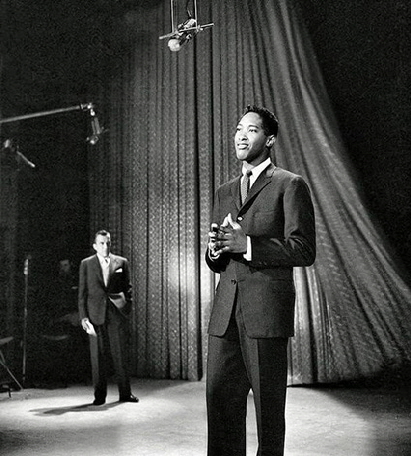
So on December 1, 1957, Sam returned. Ed Sullivan introduced him by saying “Sam, here’s the time.” Dressed neatly in suit and tie, Cooke delivered a stripped-down version of “You Send Me.” His performance used little more than backup vocals to compliment his singing, and centered on Cooke himself. As he crooned directly into the camera, his effortless charisma and charming smile made him a hit with audiences. Right after the show aired, “You Send Me” reached number one on the Billboard Top 100, displaying just how successful his performance was.
Later in the show, Ed brought Sam onstage and apologized to him and the audience saying, “I did wrong one night here on our stage. And I never received so much mail in my life!” Sam, now dressed in a tuxedo, sang his rendition of “(I Love You) For Sentimental Reasons,” an R&B classic sung most famously by Sullivan show regular Nat “King” Cole in 1946. Ed Sullivan had always been a supporter of the civil rights movement, bringing on African-American artists like Nat “King” Cole before anyone else in the industry was. But while Cole had always been a very “safe” act, Cooke was pushing the envelope in regards to race and music. Cooke combined the smooth crooning style of past greats like Bing Crosby and Frank Sinatra with a soulful tone that many in Sullivan’s audience hadn’t previously heard.
In his tragically short life, Cooke made only a few television appearances, and The Ed Sullivan Show performance is one of the only ones that still exist. It proved once again that Sullivan was a reliable ally of the civil rights movement, and jumpstarted Cooke’s career as a pioneer of the “Soul” genre. Cooke’s musical style had a massive influence on the creation of Motown and on artists like Marvin Gaye and Stevie Wonder. Sam Cooke also went on to become an important leader in the civil rights movement because of politically-conscious songs like “A Change is Gonna Come,” released after his controversial death at the age of 33. But Cooke had the platform to speak out about the issues of his day only because of his early commercial success and fame. And for that, he has The Ed Sullivan Show to thank.
In his book “Dream Boogie: The Triumph of Sam Cooke”, Peter Guralnick writes that Sam’s music “still sounds as fresh, as elegant, as full of mirth, sadness and surprise as when it first emerged, translating somehow across the ages in ways that have little to do with calculation or fashion and everything to do with the spontaneity of feeling, with a kind of purity of soul.”
Thanks to the American Music Society for this story.
February 26, 2024
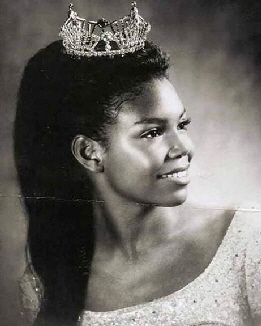
Cheryl Browne, first African-American contestant for the title of Miss America in 1971.
Cheryl Adrienne Browne was born in New York City in 1950 and studied dance at LaGuardia High School in Manhattan. After high school, she moved to Decorah, Iowa to study dance at Luther College. After winning the Miss Decorah contest, on June 13, 1970, she beat 19 white contestants to win Miss Iowa, making her eligible to compete for the 1971 Miss America crown.
Cheryl became the first black woman to compete for the Miss America title, the first African American contestant to make it to the final, even though competition rule number seven, instituted during the 1930s, which read: “Contestants must be of good health and of the white race,” had been abolished 30 years before in 1940.
Her win as Miss Iowa and appearance at the Miss America pageant generated criticism in newspapers, the Miss Iowa pageant board, and to Browne herself. The criticisms ranged from her ethnic background to the fact that she had only lived in Iowa for a short time before entering the competition. In a newspaper interview Browne stated that she was “surprised that Iowa, with its conservative traditions, silent majority, and small black population (1 percent of the state's 1970 population of 2,800,000) was the first state to pick a black girl as its representative.”.
Years later, speaking about her appearance in the contest, Browne said, “Iowans were very accepting of me, but I think it took the country by surprise to realize that it was a young woman from Iowa who became the first African-American contestant. I don't feel I personally changed the pageant, but I feel that my presence expanded people's minds and their acceptance. And, in subsequent years, they were much more open to African-American candidates [...] I didn't feel hounded by the press, but it was obvious that security was tight —especially at Convention Hall rehearsals when our chaperones weren't always present.”
The 1971 Miss America title was won by Phyllis George. Cheryl Browne graduated from Luther College in 1972. She later married Karl Hollingsworth, worked in the financial industry, and had two children.
February 27, 2024
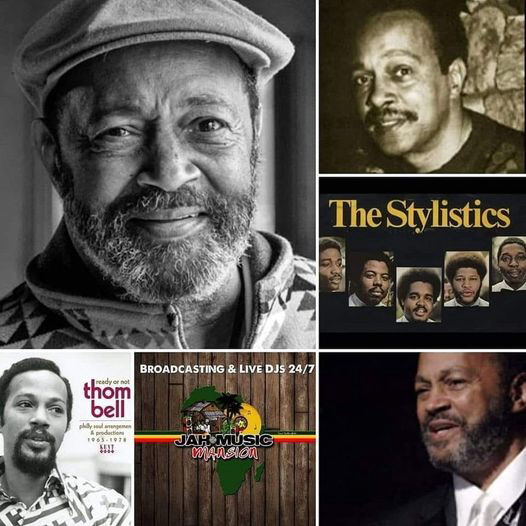
Thomas Randolph Bell (born January 26, 1943, died December 22nd 2022) is a Jamaican-born American songwriter, arranger, and record producer, known as one of the creators of Philadelphia soul in the 1970s.
Bell is best remembered for his success with the Philadelphia sound in the 1970s, particularly with the Stylistics and Spinners.
In June 2006, Bell was inducted into the Songwriters Hall of Fame.
In 2016, Bell was inducted into the Musicians Hall of Fame and Museum.
Bell, classically trained as a musician, moved to Philadelphia as a child, and as a teenager sang with Kenny Gamble, Leon Huff, and Daryl Hall (of Hall & Oates fame). Bell's first big break in soul music came with Cameo Records in Philadelphia where he worked as a session player and arranger.In 1967, he was introduced to a local group called The Delfonics, producing two singles for them on subsidiary label, Moonglow. Bell brought a startlingly mellifluous, hypnotic haut en couleur style and ravishing magnificence to soul music and soon his excelsior production talents yielded several big hits for the group on the Philly Groove label, run by their manager Stan Watson. These included "La-La (Means I Love You)" and "Didn't I (Blow Your Mind This Time)," the latter nominated for a Grammy Award in 1970.
Philadelphia Soul
February 21, 2024
Coppin was born enslaved on October 15, 1837, in Washington, D.C. She gained her freedom at the age of 12 when her aunt, who worked for $6 per month and saved $125, was able to purchase her freedom. In 1860, she enrolled at Oberlin College and was the first African American student to be appointed to the college’s preparatory department.
While attending Oberlin, Coppin established an evening school for previously enslaved blacks. Coppin earned her bachelor’s degree in 1865. She began to teach at the Institute for Colored Youth in Philadelphia. In 1869, Coppin became principal of the institute, making her the first African American woman to receive that title. She served in that position until 1906. In addition to teaching, Coppin founded homes for working and poor women and wrote an influential column in the local newspapers that defended the rights of women and blacks.
In 1902, Coppin and her husband went to South Africa and founded the Bethel Institute, a missionary school that emphasized self-help programs. Her book “Reminiscences of School Life, and Hints on Teaching” was published shortly after her death. In 1926, a teacher training school was named the Fannie Jackson Coppin Normal School in her honor. That school is now Coppin State University. (Today in African American History, 2024)
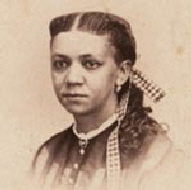
On this day, January 21st, in Black Herstory
In 1913, Fannie Jackson Coppin, educator and journalist, died.
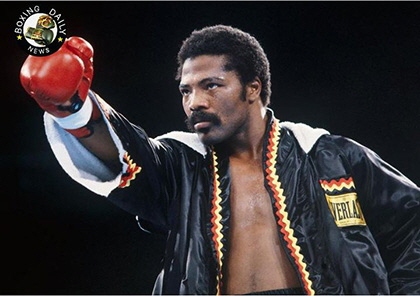
The Story of American Hawk Aaron Pryor
The father died, the mother was an alcoholic, but their son is one of the best boxers of the 20th century. The story of Aaron Pryor.
![]() 1. Aaron's childhood was no less difficult than that of many other great champions. When he was born, his father was no longer alive. The mother drank a lot because of depression and actually gave up raising the child. Pryor had an older brother, but he also ended up in jail after getting involved with crime.
1. Aaron's childhood was no less difficult than that of many other great champions. When he was born, his father was no longer alive. The mother drank a lot because of depression and actually gave up raising the child. Pryor had an older brother, but he also ended up in jail after getting involved with crime.
![]() 2. As a teenager, Pryor worked as a loader in a grocery store for 30 cents a day. Later he became a pizza delivery boy. There was no talk of anything great. But His Majesty Chance changed everything radically. A certain Buddy LaRosa became interested in Aaron's story. He took the boy to the boxing section, and when he won the state championship just 5 months later, he gave him an allowance of $500 a month.
2. As a teenager, Pryor worked as a loader in a grocery store for 30 cents a day. Later he became a pizza delivery boy. There was no talk of anything great. But His Majesty Chance changed everything radically. A certain Buddy LaRosa became interested in Aaron's story. He took the boy to the boxing section, and when he won the state championship just 5 months later, he gave him an allowance of $500 a month.
![]() 3. Already at the age of 17, Pryor became the US amateur champion. At age 20, Aaron won the Golden Gloves tournament and became number one on the US Olympic team. In the final he defeated Tommy Hearns.
3. Already at the age of 17, Pryor became the US amateur champion. At age 20, Aaron won the Golden Gloves tournament and became number one on the US Olympic team. In the final he defeated Tommy Hearns.
![]() 4. Unfortunately, it was not possible to get to the 1976 Olympics, as Pryor lost to the future Olympic champion Howard Davis in the qualifying tournament. This accelerated Aaron's transition to professional boxing. His coach was the controversial Carlos "Panama" Lewis.
4. Unfortunately, it was not possible to get to the 1976 Olympics, as Pryor lost to the future Olympic champion Howard Davis in the qualifying tournament. This accelerated Aaron's transition to professional boxing. His coach was the controversial Carlos "Panama" Lewis.
![]() 5. In less than 4 years, Pryor became the WBA and The Ring world champion at 63.5 kg, defeating a very cool boxer Antonio Cervantes with a record of 63-10.
5. In less than 4 years, Pryor became the WBA and The Ring world champion at 63.5 kg, defeating a very cool boxer Antonio Cervantes with a record of 63-10.
![]() 6. Aaron made 8 successful title defenses, including two early victories over Alexis Arguello, a legendary boxer with a record of 72-5 and the leader of the lightweight division. By 1985, Pryor's record had grown to 36-0. In the early 80s, his team negotiated with Sugar Ray Leonard. Pryor was offered a fee of 750 thousand dollars, which was not enough. Leonard later retired due to a detached retina. Earlier, due to contractual differences, the fight with Roberto Duran fell through.
6. Aaron made 8 successful title defenses, including two early victories over Alexis Arguello, a legendary boxer with a record of 72-5 and the leader of the lightweight division. By 1985, Pryor's record had grown to 36-0. In the early 80s, his team negotiated with Sugar Ray Leonard. Pryor was offered a fee of 750 thousand dollars, which was not enough. Leonard later retired due to a detached retina. Earlier, due to contractual differences, the fight with Roberto Duran fell through.
![]() 7. Pryor's career was managed by Don King. And the boxer was very dissatisfied when he could not organize fights for him with Duran and Leonard. However, part of the problem was Aaron himself. He caught the âœstar sicknessâ: he allowed himself to party, drive drunk, behave defiantly towards other boxers and... became addicted to drugs. Moreover, Pryor fired Buddy LaRosa from his post as manager - the same one who pulled him out of the darkness, took him to the boxing gym and supported the young talent with his own money.
7. Pryor's career was managed by Don King. And the boxer was very dissatisfied when he could not organize fights for him with Duran and Leonard. However, part of the problem was Aaron himself. He caught the âœstar sicknessâ: he allowed himself to party, drive drunk, behave defiantly towards other boxers and... became addicted to drugs. Moreover, Pryor fired Buddy LaRosa from his post as manager - the same one who pulled him out of the darkness, took him to the boxing gym and supported the young talent with his own money.
February 22, 2024
✅8. It’s surprising that this lifestyle appeared back in the early 80s, that is, he won against Arguello with exactly this baggage. At that time, Bob Arum was already taking care of Alexis's career. The fight with Arguello is a separate chapter of Pryor’s career. Aaron's coach hired a man with a gun (!!!) who burst into Arguello's locker room before the fight and threatened him. Naturally, this knocked the champion out of his mood. However, he looked good in the fight. Then Aaron’s coach did another trick - after the 13th round, he gave his boxer a prohibited solution right in the corner, which sharply increased his energy. In the 14th round, Pryor knocked out Arguello. For all this, Carlos Lewis was deprived of his license.
✅ 9. Aaron retired in 1983 after knocking out Arguello for the second time. He returned twice in 1984 and 1987. This was not the same Pryor at the peak. He was knocked out by Bobby Joe Young. This defeat was the first and only in Aaron's career. He finally retired in 1990 with a record of 39-1.
✅ 10. The end of his boxing career was overshadowed by partial loss of vision. However, Pryor pulled himself together, recovered from drug addiction and partially restored his lost vision. In 1996, Aaron was inducted into the International Boxing Hall of Fame. Moreover, he was given a lifetime pension due to health problems.
✅ 11. After leaving boxing, Pryor worked as a trainer in his hometown. He and his wife Frankie had four children. The boxer became a religious person and often attended church.
✅ 12. Unfortunately, Aaron was not in good health. Problems with blood vessels and heart appeared. He died on October 9, 2016 at the age of 60.
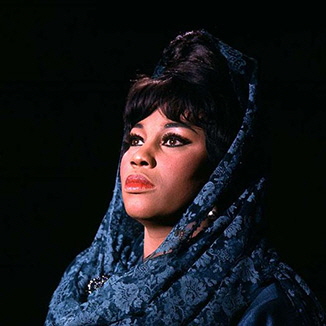
In 1955, Leontyne Price became the first Black American to sing opera on television, appearing in the title role of Puccini’s “Tosca.” It was the culmination of a childhood dream for the Laurel, Mississippi, native after going on a school trip at age 14 and hearing Marian Anderson sing.
“The minute she came on stage, I knew I wanted to walk like that, look like that, and if possible, sound something near that,” she said.
When she performed alongside a White tenor, many NBC affiliates in the South refused to air the broadcast. But 11 years later, her hometown and many other radio stations across the South carried her live performance in “Antony and Cleopatra.”
With her soaring soprano, she became the first woman to open the new Met at Lincoln Center in 1966. She has received the Presidential Medal of Freedom, Kennedy Center Honors and 19 Grammy Awards. In 2017, she was inducted into The Performing Arts Hall of Fame at Lincoln Center alongside the likes of Louis Armstrong, Plácido Domingo and Yo-Yo Ma. Her interview in the documentary, The Opera House, prompted The New York Times to rave, “Leontyne Price, Legendary Diva, Is a Movie Star at 90.
Leontyne Price
February 23, 2024
Scott Joplin published his seminal work, "Maple Leaf Rag," in 1899. After approaching other publishers, Joplin negotiated a contract with John Stark, of Sedalia, Missouri, to have the rag issued. The contract called for Joplin to receive a penny for each copy sold. Joplin's first year's earnings from the piece would pocket him $4 (less than $150 in today's valuation). The work grew in popularity and sales increased, eventually netting him about $600 in annual sales. "Maple Leaf Rag" remains one of the formative rags of the era and an important work in American music.
February 24, 2024
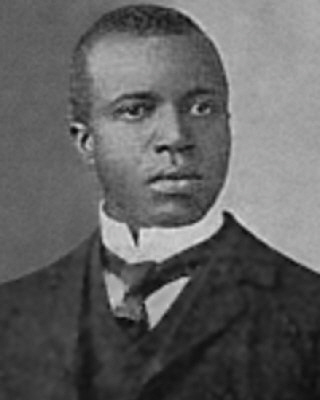
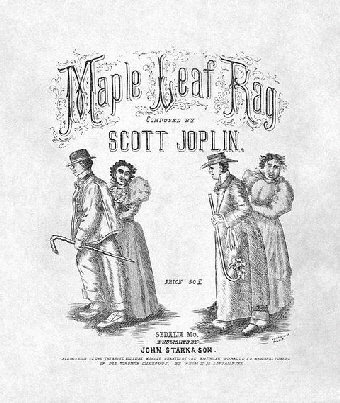
Credit to: River Raisin Ragtime Revue
February 19, 2024
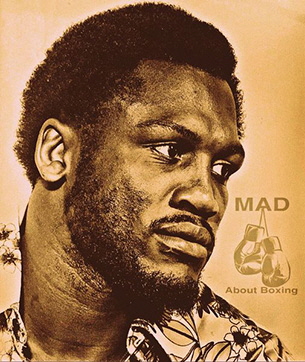
“I know my destiny. I was born into animosity, bigotry and hatred. We had water for white folks, and water for coloured folks. White lines, black lines. I came from Beaufort in South Carolina, and it was tougher than Georgia, Alabama and Mississippi.”
“I don’t mind people want to think Muhammad is the greatest fighter around. Everybody wants to make him great because of his mouth, that he was the best. He was good, but that doesn’t make him great. I proved that.”
“This ultimate fighting stuff is something I don’t agree with. Once a man is down, you have to let him have a chance to prove how good he is.”
“Had my own car at twelve years old. Left school in the tenth grade. Married when I was sixteen. Ain’t hard to figure out; I was a man at a very young age.”
“Twenty years I’ve been fighting Ali, and I still want to take him apart piece by piece and send him back to Jesus.”
“It was all about the ring. That’s where you got your brains shook and the money took.”
“There are places on a man’s head that are as hard as a rock. Your head’s actually stronger than your body. And you don’t have too many instruments up there workin.”
George Frazier
February 20, 2024

Whitney Houston
Whitney Elizabeth Houston (August 9, 1963 – February 11, 2012) was an American singer and actress. Nicknamed "The Voice", she is one of the best-selling music artists of all time, with sales of over 200 million records worldwide. Houston has influenced many singers in popular music, and is known for her powerful, soulful vocals and vocal improvisation skills. She is the only artist to have had seven consecutive number-one singles on the Billboard Hot 100, from "Saving All My Love for You" in 1985 to "Where Do Broken Hearts Go" in 1988. Houston enhanced her popularity upon entering the movie industry. Her recordings and films, have generated both great success and controversy.
Ora Mae Washington, hall of fame athlete considered by many the finest female athlete of the 1920s and 1930s, was born in Philadelphia, Pennsylvania. Washington began playing tennis in 1924 and by 1929 was the national singles champion of the American Tennis Association, the oldest African American sports organization in the United States. She won that title eight times in the nine years between 1929 and 1937 and won 12 straight doubles championships.
Due to segregation and the unwillingness of White players to take the challenge, Washington was not able to prove that she was the best women’s tennis player in the country. Washington began playing basketball for the Philadelphia Tribune team. The Tribune only lost six times in games played during the 1930s. Washington played basketball for 18 years. After retiring from sports, Washington supported herself as a housekeeper. Washington died May 28, 1971. She was posthumously inducted into the Women’s Basketball Hall of Fame in 2009.
Ora Mae Washington
February 14, 2024
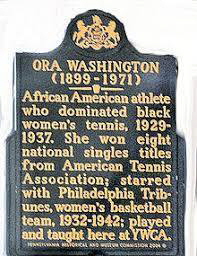
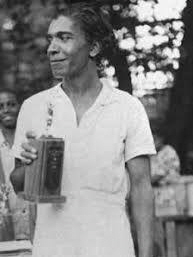
February 15, 2024
Gail Fisher (1935-2000) was one of the first African American women to play substantive roles in American television. She's best remembered for playing secretary 'Peggy Fair' on the detective series. Mannix 1967-75, CBS.
Gail Fisher
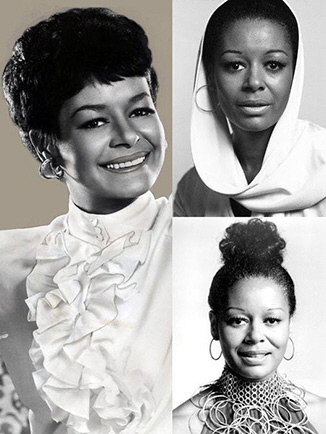
February 16, 2024
In the 1930s Leroy Robert (Satchel) formed his own international team, The Satchel Paige All-Stars!
He was known for his indeterminate age, for his exceptional fastballs and for his showboating: he would call in his outfielders -- and sometimes even order his infielders to sit down -- before striking out opposing batters.
Leroy Robert (Satchel) Paige, became the most celebrated ballplayer in the history of the Negro leagues. From the early 1930's, when Paige began the first of several stints with the Pittsburgh Crawfords, until his 1971 induction into the Hall of Fame, he symbolized the world of black baseball, for whites as well as for blacks. To learn more about Satchel view the film "Don't Look Back" 1981.
https://www.nytimes.com/.../the-legend-of-satchel-paige...
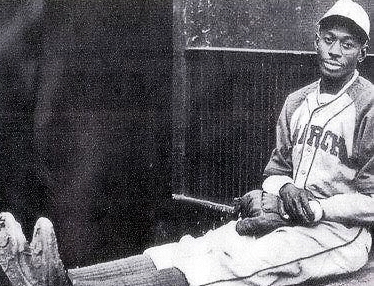
Satchel Paige
February 17, 2024
Grace Beverly Jones, OJ(born May 19, 1948) is a model, singer and actress. Born in Jamaica, she and her family moved to Syracuse, New York, when she was a teenager. Jones began her modeling career in New York state, then in Paris, working for fashion houses such as Yves St. Laurent and Kenzo, and appearing on the covers of Elle and Vogue. She notably worked with photographers such as Jean-Paul Goude, Helmut Newton, Guy Bourdin, and Hans Feurer, and became known for her distinctive androgynous appearance and bold features.
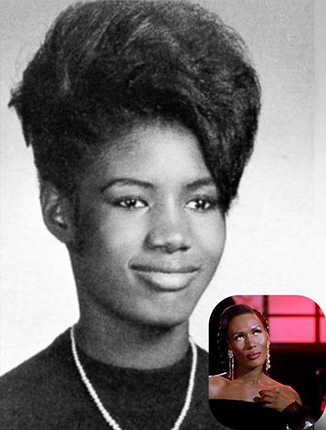
Beginning in 1977, Jones embarked on a music career, securing a record deal with Island Records and initially becoming a high-profile figure of New York City's Studio 54-centered disco scene. In the early 1980s, she moved toward a new wave style that drew on reggae, funk, post-punk, and pop music, frequently collaborating with both the graphic designer Jean-Paul Goude and the musical duo Sly & Robbie. She scored Top 40 entries on the UK Singles Chart with "Private Life", "Pull Up to the Bumper", "I've Seen That Face Before", and "Slave to the Rhythm". In 1982, she released the music video collection A One Man Show, directed by Goude, which earned her a nomination for Best Video Album at the 26th Annual Grammy Awards. Her most popular albums include Warm Leatherette (1980), Nightclubbing (1981), and Slave to the Rhythm (1985).
As an actress, Jones appeared in several indie films prior to landing her first mainstream appearance as Zula in the fantasy-action film Conan the Destroyer (1984) alongside Arnold Schwarzenegger and Sarah Douglas, and subsequently appeared in the James Bond movie A View to a Kill (1985) as May Day, and starred as a vampire in Vamp (1986); all of which earned her nominations for the Saturn Award for Best Supporting Actress. In 1992, Jones acted in the Eddie Murphy film Boomerang, and contributed to the soundtrack. She also appeared alongside Tim Curry in the 2001 film Wolf Girl.
Jones has been cited as an inspiration for multiple artists, including Annie Lennox, Lady Gaga, Rihanna, Solange, Lorde, Róisín Murphy, Brazilian Girls, Nile Rodgers, Santigold, and Basement Jaxx. In 2016, Billboard ranked her as the 40th greatest dance club artist of all time.
AWARDS & NOMINATIONS
▪1983 Billboard Music Awards
Herself Top Disco Artist - Female (Nominated)
▪1984 Grammy Awards
A One Man Show Best Video Album (Nominated)
▪1985 Bravo Otto Awards
Herself Best Female Actress (Silver) (Won)
▪1985 Saturn Awards
Conan the Destroyer Best Supporting Actress (Nominated)
▪1985 A View to a Kill (Nominated)
▪1986 MTV Video Music Awards
"Slave to the Rhythm" Best Female Video (Nominated)
▪1987 Saturn Awards Vamp
Best Supporting Actress (Nominated)
▪1988 Golden Raspberry Awards
Siesta Worst Supporting Actress (Nominated)
▪1999 Golden Raspberry Awards
"Storm" Worst Original Song (Nominated)
▪2008 Q Awards
Herself Q Icon (Won)
▪2009 Helpmann Awards
Hurricane Tour Best International Contemporary Music Concert (Nominated)
▪2014 Rober Awards
Music Poll Nightclubbing Best Reissue (Nominated)
▪2016 NME Awards
I'll Never Write My Memoirs Best Book (Nominated)
▪2017 The Voice of a Woman Awards
Herself Lifetime Achievement Award (Won)
▪2017 Bahamas International Film Festival
Herself Career Achievement Award (Won)
HONORS
▪In 2018 Jones become a member of the Order of Jamaica (OJ)
February 18, 2024
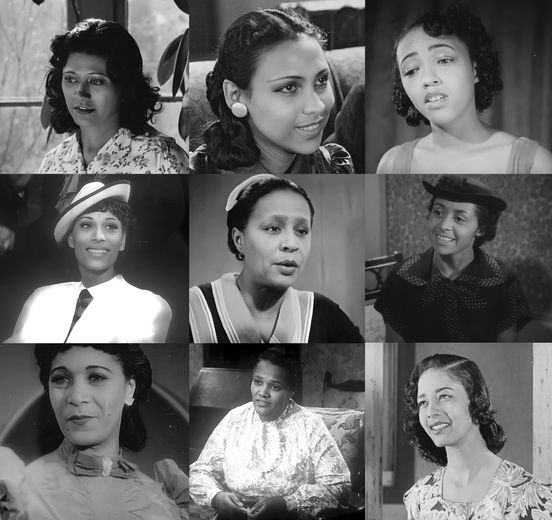
Race Films
These are actresses from Race films during the 1930s. Race films were movies featuring an all-black cast and were shown primarily in Black theaters due to Jim Crow laws. Many of the actresses in Race films did not have experience in acting and usually only starred in one movie.
1. Ethel Moses appeared in Oscar Micheaux films in the late 30s, such as "Birthright" and God's Stepchildren."
2. Dorothy Van Engle appeared in several Oscar Micheaux movies, such as "Murder in Harlem" and "Swing!"
3. Cleo Herndon appeared in "Dark Manhattan" and several Hollywood films, mostly uncredited.
4. Frances Redd appeared in "Midnight Shadow." That was her only movie.
5. Cora Green starred in "Moon over Harlem" and "Swing!"
6. Rubeline Glover only appeared in "Dark Manhattan."
7. Mae Turner starred in four Race films, including "Spirit of Youth" with Joe Louis.
8. Ruby Dandridge (Dorothy's mother) starred in primarily Hollywood films. "Midnight Shadow" was one of the few Race films in which she appeared.
9. Artie Young starred in "The Bronze Buckeroo" and several soundies (1940s music videos).
Black Film History
"Take A Giant Step" (1959) is likely the first coming-to-age film that explores black family dynamics and nuclear structure. During the early years of Hollywood, it was common practice not to show both black parents together, middle class, and raising a child. Generally, Hollywood movies neglect either the mother or father's role in the family or demean the parents as uneducated and ignorant. "Take a Giant Step" examines many perspectives that the teenage boy (played by Johnny Nash) must navigate in a white neighborhood and how out-of-touch the parents are when they ignore their child's life situations. I highly recommend this movie because it goes beyond black family dynamics. Many people can relate to this movie, even today.
“Take A Giant Step”
February 10, 2024
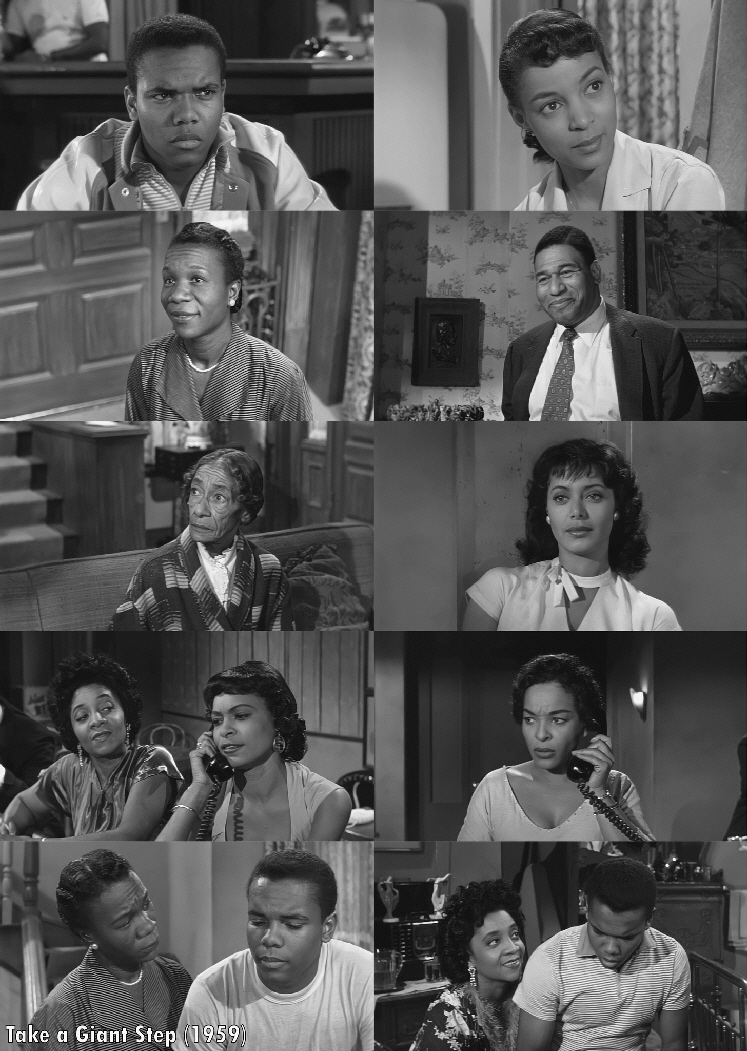
Director: Philip Leacock
Writers: Louis S. Peterson (screenplay), Julius J. Epstein (screenplay)
Starring Johnny Nash, Estelle Hemsley, Ruby Dee, Frederick O'Neal, Beah Richards, Ellen Holly, Paulene Myers, Frances Foster, Bill Walker
Storyline
Spence Scott (Johnnie Nash) is a black high school senior struggling to become a man while living in a middle-class white neighborhood in the late 1950s. In protest of the paternalistic views of the Civil War emphasized in his history class, he storms out and gets caught smoking in the bathroom. As the relationships around Spence seem to unravel, his straightforward grandmother (Estelle Hemsley) ensures he has someone who will listen.
February 11, 2024
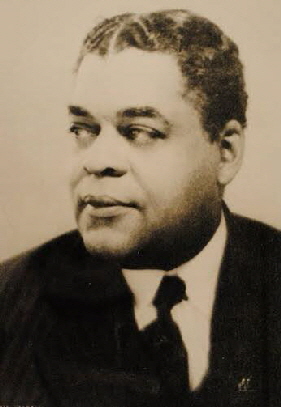
Arthur A. Schomburg was born on January 24,1874. He was an African American historian.
Schomburg was from Santurce, Puerto Rico; he attended San Juan's Institute of Instruction to become a teacher and also studied in the Danish West Indies, doing a great deal of research on Negro literature. Schomburg came to America in 1891 and ten years later moved to New York City, working at a law firm as a researcher. During this time, he actively supported Cuban and Puerto Rican Independence, and served as secretary of Las dos Antillas, an organization working for this cause.
In 1924, while in Europe, he searched for and acquired valuable information on Negro history. In Seville, Spain he dug into the original, loosely collected records of the Indies and was able to shed new light on Negro history. In 1929 Schomburg retired from the Bankers Trust Company and took a position at Fisk University as curator of his vast collection of papers, which now bears his name. The collected works consist of more than 5000 volumes and thousands of pamphlets, old manuscripts, prints and bound sections of newspaper and magazine clippings, is the largest and finest of its kind in existence.
He ranks as the foremost historian and collector of books on Africans in the America. Arthur Alfonso Schomburg died in 1938. In 1940, the New York Public Library renamed its division of Black history, literature, and prints after him.
Langston Hughes (second row from top, 3rd from the right) with the American Negro Film Group aboard the S.S. Europa, 1932. Also shown noted African American authors/playwrights Dorothy West, Ted Poston, Henry Moon Lee, Loren Miller among others. Yale Collection of American Literature, Beinecke Rare Book and Manuscript Library.
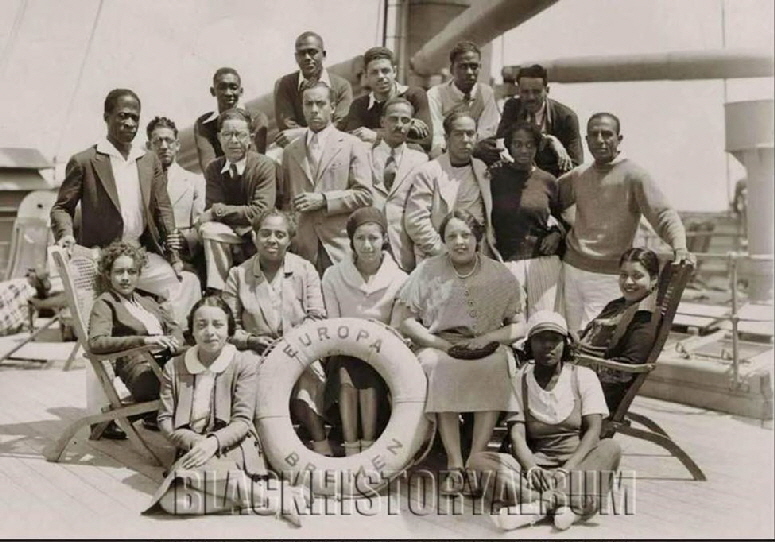
February 12, 2024
Marilyn McCoo and Billy Davis, Jr. have enjoyed tremendous success through the years as recording artists, performers and authors. They have received 7 Grammy Awards and earned 15 gold and 3 platinum records, and enjoyed starring roles on television and stage. They have performed to sold-out concerts around the world. They are currently celebrating over 50 years in the entertainment business with a musical tribute to the hits and productions that have made up their multi-faceted careers.
As lead vocalists of one of the top singing groups of the late 60s and early 70s, The 5th Dimension, they recorded such classics as UP, UP & AWAY, AQUARIUS/LET THE SUNSHINE IN, WEDDING BELL BLUES, ONE LESS BELL TO ANSWER, and STONED SOUL PICNIC to name a few.
After a decade with The 5th Dimension, Billy & Marilyn decided to leave the group and establish themselves as a duo. They had immediate success with the single, YOU DON’T HAVE TO BE A STAR (TO BE IN MY SHOW). It was a #1 hit and earned them a Grammy for Best R&B Vocal Performance By a Duo or Group.
February 13, 2024

That success peaked network interest and CBS-TV premiered THE MARILYN McCOO & BILLY DAVIS, JR. SHOW as a prime-time summer series in 1977. Marilyn & Billy entered the 80s as an international success. They headlined in Las Vegas, Lake Tahoe, and Atlantic City, played to SRO crowds in concerts across the country, and won the prestigious Grand Prize at the international Tokyo Music Festival. Back home, they were sought-after guests for every major television show.
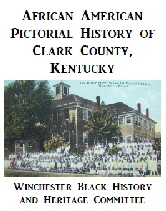
Our group published the African American Pictorial History of Clark County, Kentucky in 2018.
Looking for stories that were formerly on our front page?
February 1, 2024
1887 Photograph of Harriet Tubman, her Husband Nelson Davis, and Their Adopted Daughter Gertie.
Harriet Tubman married her second husband Nelson Davis on 18 March 1869 with whom they adopted daughter, Gertie. Born in North Carolina, her husband had served as a private in the 8th United States Colored Infantry Regiment from September 1863 to November 1865. Nelson died on October 14, 1888 of tuberculosis.
The great Harriet Tubman died of pneumonia in 1913 at the age of 93 surrounded by family members whom she told “I go to prepare a place for you.”
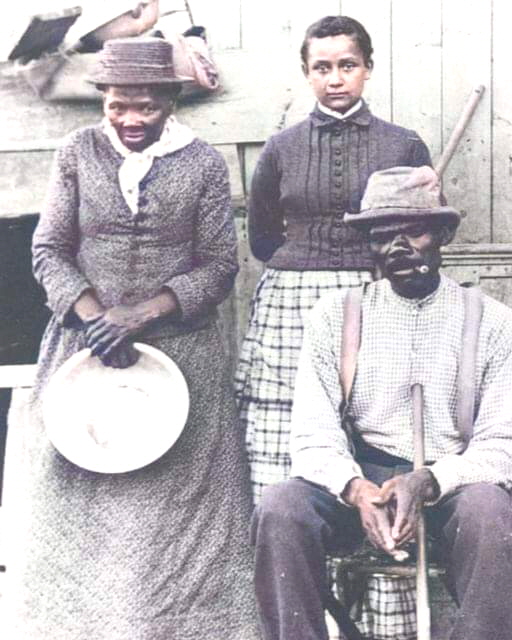
February 2
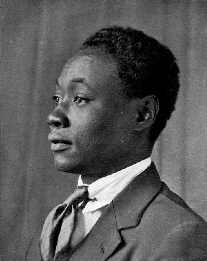
Claude McKay
If We Must Die by Claude McKay
If we must die, let it not be like hogs
Hunted and penned in an inglorious spot,
While round us bark the mad and hungry dogs,
Making their mock at our accursèd lot.
If we must die, O let us nobly die,
So that our precious blood may not be shed
In vain; then even the monsters we defy
Shall be constrained to honor us though dead!
O kinsmen! we must meet the common foe!
Though far outnumbered let us show us brave,
And for their thousand blows deal one death-blow!
What though before us lies the open grave?
Like men we’ll face the murderous, cowardly pack,
Pressed to the wall, dying, but fighting back!
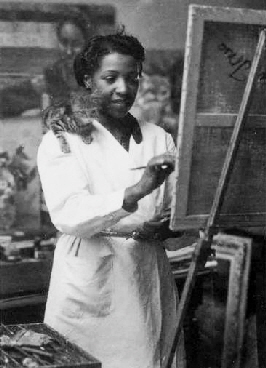
February 3
Lois Mailou Jones
painting in her Paris Studio in 1937 or 1938
with kitten supervising from her
shoulder.
The Harlem Hellfighters
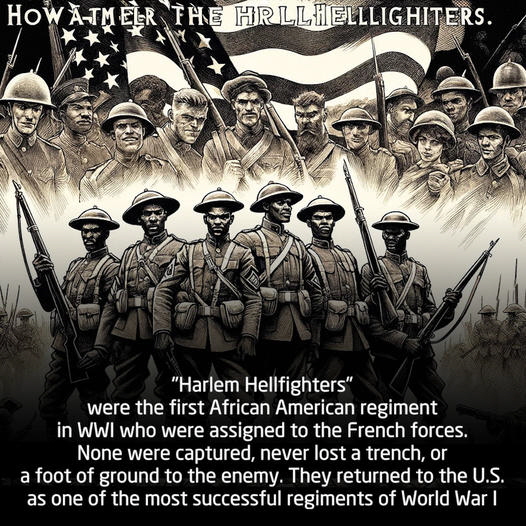
February 4, 2024
February 5, 2024
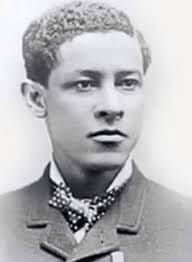
In 1932, Richard B. Spikes received a patent for an automatic car gear shift. Major companies welcomed his inventions. Its patent #1889,814.
By the time he created the automatic safety brake in 1962, Spikes was losing his vision. To complete the device, he first created a drafting machine for blind designers. The machine would soon be used in almost every school bus nationwide.
These are other inventions by Richard B. Spikes:
railroad semaphore (1906)
automatic car washer (1913)
automobile directional signals (1913)
beer keg tap (1910)
self-locking rack for billiard cues (1910)
continuous contact trolley pole (1919)
combination milk bottle opener and cover (1926)
method and apparatus for obtaining average samples and temperature of tank liquids (1931)
automatic gear shift (1932)
transmission and shifting thereof (1933)
automatic shoe shine chair (1939)
multiple barrel machine gun (1940)
horizontally swinging barber chair (1950)
automatic safety brake (1962)
Richard B. Spikes
February 6, 2024
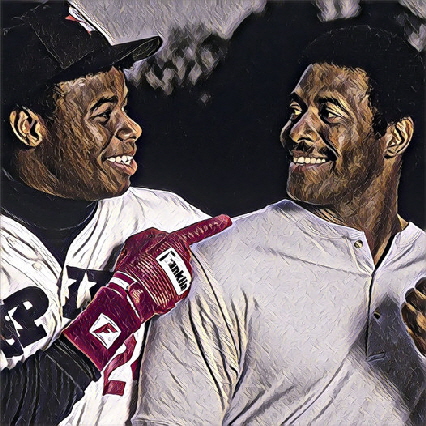
A 13-year-old boy was kicked out of the Yankees dugout...
His response changed baseball forever ������
By the '80s, Yankees manager Billy Martin had quite a reputation:
• Broke a reporter's nose
• Bar fights with strangers
• Bar fights with his players
But this particular story will live in baseball lore forever.
At the time, players' kids would get to Yankee Stadium early to hang out before games.
On this day, groups of boys were running around the Yankee clubhouse & playing on the field.
But Billy Martin zeroed in on one of them.
Martin sent a security guard into the dugout where a 13-year-old boy & his father – the Yankees star 1st baseman – were hanging out.
"Hey, George [Steinbrenner] doesn't want anybody in the dugout."
The player complied, sending his son into the clubhouse.
As the boy left, his dad motioned for him to "look at third base." It was Graig Nettles' son taking ground balls on the field.
The Yankees star felt insulted. And his 13-year-old son took it to heart. This kid held a grudge against the New York Yankees for the next 30 years.
His name?
George Kenneth Griffey Jr.
A few years later, Ken Griffey Jr. was the number 1 overall pick in the MLB Draft.
At 17 years old, he was shipped off to play minor league ball 2,400 miles from home – a 36-hour drive.
Compounded with enormous expectations, Junior struggled with depression during this time. But his dad was always there, helping him overcome every hurdle.
2 years later, Junior made it to the big leagues & became a symbol of hope for the lowly Seattle Mariners. His dad joined him shortly after, forming the first father-son teammate duo in MLB history. And Junior stuck it to the Yankees every chance he got.
In the 1st playoff game of his career, he smoked 2 homers at Yankee Stadium. Seattle won the series, as The Kid hit .391 (9-for-23) with 5 HRs & 7 RBI.
While signing autographs outside the stadium, a fan in the crowd yelled out: "Come play for the Yankees, bro!"
"No," Junior shot back. "If the Yankees were the last team – if they were the only team that gave me a contract, I'd retire."
Ken Griffey Jr's career vs. the Yankees:
• 36 HRs
• 102 RBI
• .311 AVG
• 133 games
Crushing the Yankees was ingrained in Junior's mind.
"There are certain things that a dad drills into you as a kid that just stick with you."
"That was one of them."
Take me out to the ball game.....
February 7, 2024
Musician Cab Calloway
Cab Calloway was a legendary jazz musician who also appeared in musical movies such as Hi-De-Ho in 1947. His career started when he had his first major job at the Cotton Club with his band and dancers he named his “Chocalate Bunnies.” Calloway also had the Cotton Club change their policy to also hire dark complexioned dancers instead of only light skinned dancers so his “Chocolate Bunnies” can perform with him on stage. Did you also know that Ja’Net DuBois from Good Times was his daughter?
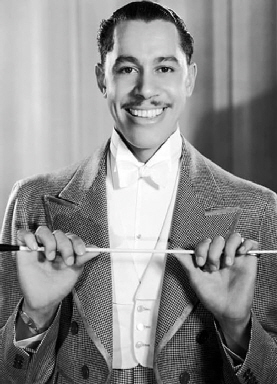
Mary McLeod Bethune
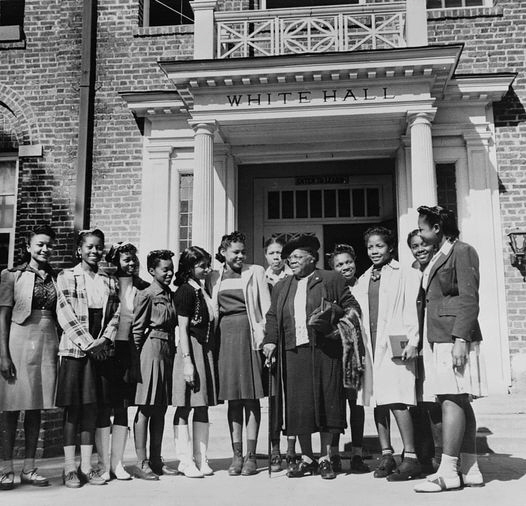
Educator and civil rights activist, Mary McLeod Bethune is the only Black woman to found an HBCU, Bethune-Cookman College. In the accompanying photo she is pictured with some of the students at Bethune-Cookman in 1943. See the Mary McLeod Bethune profile on BlackPast.org here: https://www.blackpast.org/.../bethune-mary-jane-mcleod.../.
February 8, 2024
Robert Robinson Taylor
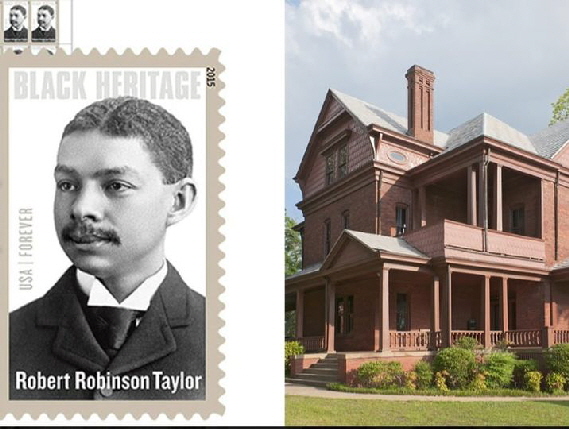
Robert Robinson Taylor was the first academically trained and credentialed black architect in America.
He grew up in North Carolina where he worked as a carpenter and foreman for his father, Henry Taylor, who was a former forced laborer. Taylor attended the Massachusetts Institute of Technology, becoming the school’s first black graduate. While a student, he met Booker T. Washington, who later recruited him to lead the industrial program and campus expansion of the Tuskegee Institute in Alabama.
The institute is an African American vocational school that is now a designated National Historic Site. Over the course of his career, Taylor designed more than 25 buildings on the Tuskegee campus, along with libraries, housing, museums, and other academic buildings across the United States. He also laid out architectural plans and devised a program in industrial training for the Booker Washington Institute in Kakata, Liberia
February 9, 2024
WINCHESTER BLACK HISTORY
AND HERITAGE COMMITTEE

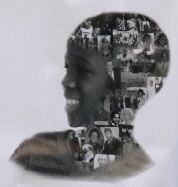
© 2019-2024, ALL RIGHTS RESERVED,
Winchester Black History and Heritage Committee
Website Designed and managed by Graphic Enterprises
